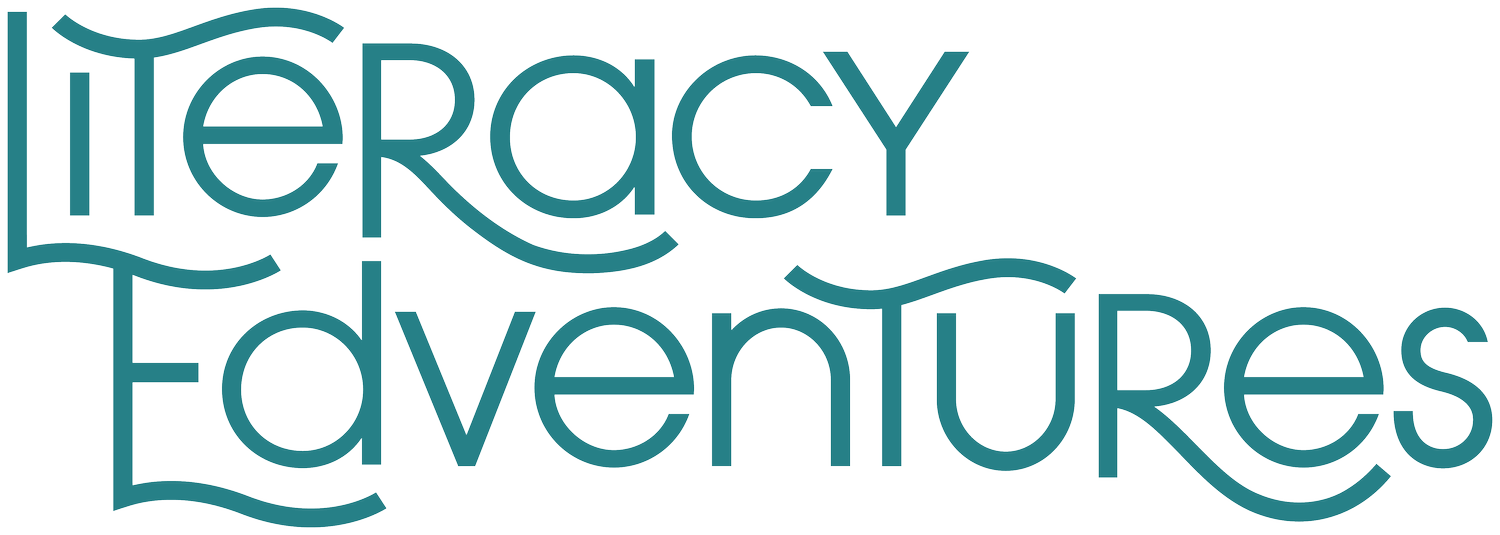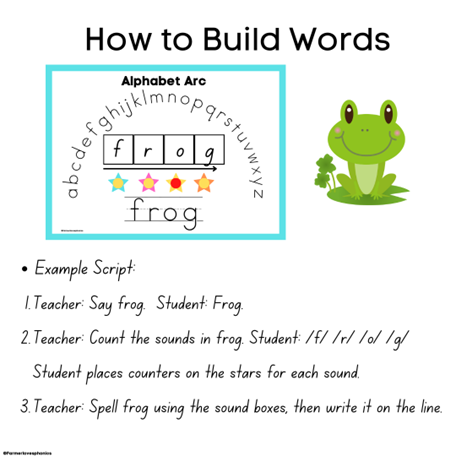Orthographic Mapping: Training the Brain to Read
A Guest Blog by: Jessica Farmer from Farmer Loves Phonics
Hello everyone, I am honored to be a guest blogger on Literacy Edventures and share my thoughts on the critical process of orthographic mapping in reading. As a former elementary school teacher, I have a strong passion for education, specifically in the primary grades. I have taught in the primary grades for 13 years, mostly in first grade, and have always incorporated phonics in my teaching. In fact, I used a program called The Phonics Dance, which my mentor teacher passed down to me, and I noticed a huge difference when I started teaching more phonics.
However, despite my efforts, I didn't fully understand the role of phonemic awareness in reading until I learned about the science of reading in 2020. It was then that I realized how important it was to promote orthographic mapping in developing skilled readers. I felt guilty for not knowing this earlier and failing past students. But, it was also a moment of realization and I knew I had to do something about it.
So, I started making TikTok videos to share phonics tips with parents teaching their children at home during the pandemic. To my surprise, this passion turned into a new career path and I decided to connect with even more teachers and educators. I left the classroom at the end of last school year and now I am committed to creating resources, sharing freebies, and providing webinars to share about the science of reading with everyone.
In this blog post, I will delve deeper into the process of orthographic mapping and the importance of phonemic awareness, grapheme-phoneme knowledge, and decoding skills. Let's get started!
“To form connections and retain words in memory, readers need some requisite abilities. They must possess phonemic awareness, particularly segmentation and blending. They must know the major grapheme-phoneme correspondences (letter-sound knowledge) of the writing system. Then they need to be able to read unfamiliar words on their own by applying a decoding strategy.” Doing so “activates orthographic mapping to retain the words’ spellings, pronunciations, and meanings in memory.” Linnea Ehri
Reading is a complex process that involves various cognitive skills and neural pathways working together seamlessly. Orthographic mapping is a crucial process in the development of skilled reading, and it is essential to understand what it entails and how it occurs. Simply put, orthographic mapping is the process by which the brain maps the sounds (phonemes) and spellings (graphemes) of a word onto its visual representation, making it easier for us to recognize the word in the future (sight word).
However, orthographic mapping is NOT an activity that can be done in isolation. Instead, it is a brain process that can be promoted through various activities that focus on phonemic awareness, automatic spelling to sound correspondence, and applying that knowledge to decode unfamiliar words. These skills are critical for building pathways in the brain and consolidating reading skills, enabling students to make the shift from learning to read to reading to learn.
Researcher Linnea Ehri has described the typical stages of reading development, from pre-alphabetic to consolidated alphabetic, with the aim of ensuring that students reach the consolidated alphabetic stage by the end of second grade. This is important because it allows students to focus on comprehension, rather than decoding, and to build their language comprehension, vocabulary, and background knowledge.
Activities to promote orthographic mapping:
Explicitly teach spelling patterns following a scope & sequence. Ensure that the materials you are using follow the scope & sequence you are teaching from.
Include phonemic awareness tasks that involve blending sounds and segmenting sounds. Embed this practice into your schedule. For example, segment science vocabulary words into syllables or count the sounds in number words during math.
Use word mapping with sound boxes. Segment words into each individual sound (phoneme). One sound equals one box.
Say the word and have the students repeat the word.
Count the sounds. You can finger stretch, finger tap, or use manipulatives.
Fill in the spellings one sound at a time.
Read the word.
Apply decoding skills to new words. Nonsense words can be a great option when you want to ensure mastery of a skill vs. memorizing a whole word.
Work with high-frequency words in multiple ways:
a. Introduce the word orally by its sounds, counting, blending, and segmenting.
b. Go over the spellings of the sounds, including common spellings, tricky parts, and word origin.
c. Incorporate writing the word and proper letter formation.
d. Find the word amongst look-alike words to increase attention to spelling.
What activities should we avoid using?
To effectively teach reading and spelling, it is important to avoid certain activities. Flashing cards with words on them and having students repeat them without connecting to the sounds, meanings, and spellings should be avoided. Similarly, just writing a word repeatedly without going deeper into the underlying sounds and meanings should also be avoided. Rote memorization may work for some students, but it will not be effective for all. It is essential to go deeper to ensure that all students have a good grasp on the spelling patterns.
Additionally, it is important to note that teaching high-frequency words should NOT replace core phonics instruction. Most words should be (and can be) taught through explicit systematic foundational skills lessons that include phonemic awareness, phonics, blending words, decoding, segmenting words, and encoding. These lessons should also be used to build vocabulary and connect words to meaning. For instance, after blending words, teachers can put them on a slide and provide clues to their meanings. Students can then identify which word means a particular thing, which word is the opposite of another, or which word means the same as a given word. By avoiding ineffective activities and integrating phonics instruction with vocabulary building, teachers can help their students become proficient readers and promote orthographic mapping.
Final Takeaways
Foundational skills are essential. By teaching foundational skills, you will inevitably be using activities that promote orthographic mapping. Find a curriculum with a solid scope & sequence. UFLI is a great example!
It doesn’t have to be fancy or complicated. Simply tell the students what they need to know. Practice using I do, we do, you do…and repeat again and again.
Keep growing your teacher knowledge because teachers do the teaching, not the curriculum.
In closing, I would like to extend my deepest gratitude to Literacy Edventures for giving me the opportunity to share my passion for literacy education with your readers. It has been an absolute pleasure to be a guest blogger on this platform and to connect with fellow educators who share the same dedication to helping students succeed. I hope that my insights and resources have been helpful and that they will continue to inspire and support your efforts to promote literacy among your students. Please feel free to reach out to me anytime at Farmerlovesphonics@gmail.com, and don't forget to stay tuned for more webinars and resources coming soon. Together, let's work towards the goal of ensuring that everyone can read. #untileveryonecanread
My Beacons Page
https://beacons.ai/farmerlovesphonics
UFLI Virtual Teaching Resources Hub: FREE Instructional Activities
https://ufli.education.ufl.edu/resources/teaching-resources/instructional-activities/
Phonics and Stuff: FREE Tools for Teaching Phonics
https://phonicsandstuff.com/tools
FREE Blending Board
https://www.teacherspayteachers.com/Product/FREE-Blending-Boards-2-versions-8687647
FREE Dictation Templates
https://www.teacherspayteachers.com/Product/FREE-Dictation-Templates-9026478
30 Early High-Frequency Words for Beginning Readers (Now Editable)
Sound Drill Cards
Successive Blending Pyramids Bundle




